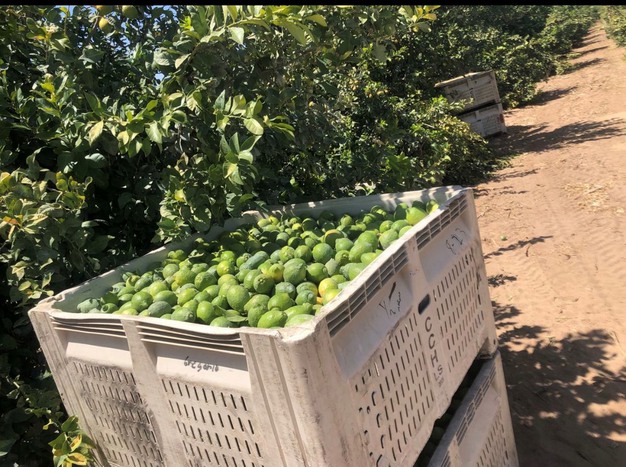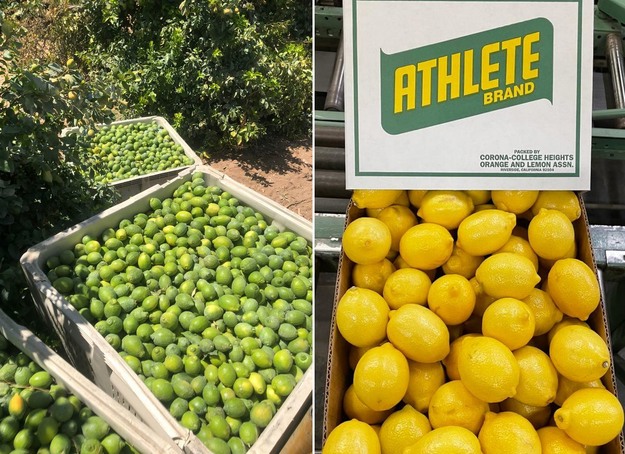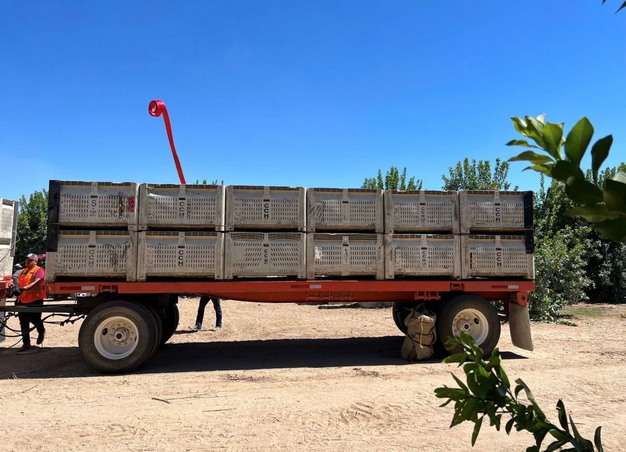California lemon production traditionally sees a lull during late July and the month of August. Production picks up as the season transitions into District 3 (desert region) around late August to early September. However, this year, the start of District 3 is behind schedule and most of the region is expected to start with limited picking between now and mid-September. “Climate change has led to more extreme environmental conditions, with increased temperatures, intense, inconsistent precipitation, and amplified insect pressure on crops. All these natural effects are creating challenging growing and crop conditions” says Jose Fu with CCH Citrus. "These changes have resulted in a delayed start to the season in District 3 and a projected 15% or larger decline in lemon production compared to last year.
 In the California desert, lemons are harvested green.
In the California desert, lemons are harvested green.
Market forces and lower supply have led to elevated lemon prices, which is beneficial for growers who have struggled with low prices in recent years. “It is a blessing that the market supply conditions are helping prices move closer to normal levels after three seasons of depressed prices,” commented Fu. Between fancy, choice, and standard grade, the seasonal average price of lemons was down about $5 - $7 per box in the past three years. “Reduced prices are predominantly caused by perfect competition exacerbated by the accumulation of large volumes of imported lemons to the U.S. market.
"Adding the rising costs of growing, packing, and distributing lemons, it becomes increasingly challenging for lemon growers to sustain. The economics of growing lemons have not been profitable in recent seasons,” shared Fu. “In response, one of the goals of the CCH cooperative has been to seek innovations to start desert harvest earlier and fetch a different window of supply. As a result, some of our growers already started the new desert crop harvest last week.”
Retailers and the food service community are considered vital partners in sustaining the lemon industry. This is especially important as the price elasticity of demand for lemons is highly inelastic, meaning consumers will continue to buy lemons in significant volume even when prices rise. The consumption of lemons has been showing steady increasing trends over the past 15 years due to their versatility of uses and healthy attributes driving demand growth.

Will the recent rainfall in California have a positive impact on the sizing of the fruit? “Water is always welcome, even though this precipitation came at a very unusual time,” said Fu. “It could be beneficial to the crop, but since it was a one-time event, it will be interesting to see the impact,” Fu added. Tropical storm Hilary hit Southern California on Sunday, August 20th and came into California east of San Diego and continued north through the desert region. “Initially, the wind was the biggest factor. It blew through District 3 with 35 – 55 miles per hour. Any impact appears to be cosmetic, affecting 10 percent of the fruit, mostly on the southeast side.” In addition to the wind, the region also received about four inches of rain. “While this is a lot of rainfall for the desert, it wasn’t excessive.”
These are some of the ongoing challenges and opportunities facing California’s lemon industry. From climate impact to economic factors and recent weather events, the sector is navigating a complex set of variables to maintain profitability and sustainability. Adaptability seems to be key, along with supportive market conditions and retailer and food service partnerships.

 For more information:
For more information:
Jose Fu
CCH Citrus
jose@cchcitrus.com
www.cchcitrus.com
